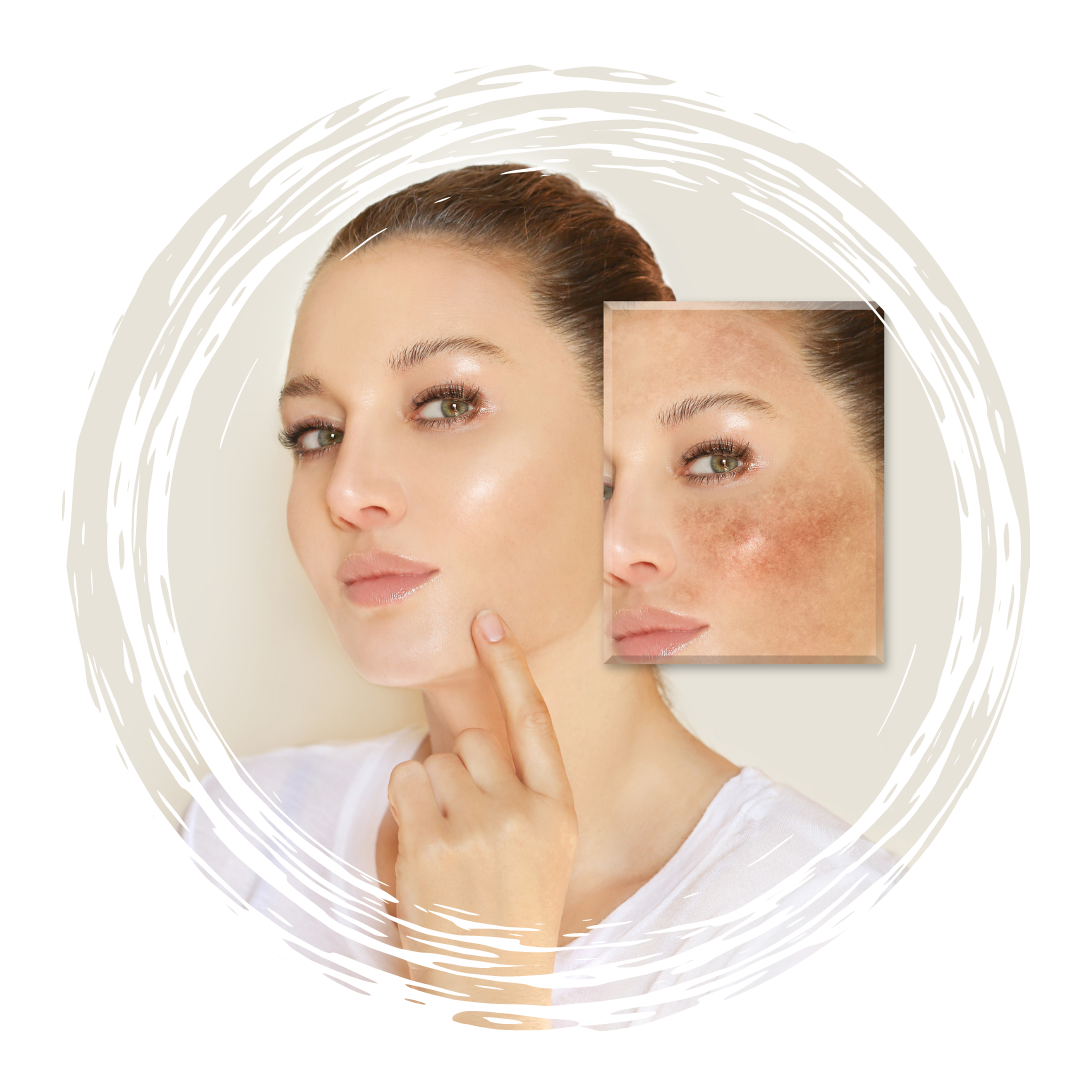Melasma
 Melasma is a common skin disorder. If you have melasma you’re probably experiencing light brown, dark brown and/or blue-gray patches on your skin. They can appear as flat patches or freckle-like spots.
Melasma is a common skin disorder. If you have melasma you’re probably experiencing light brown, dark brown and/or blue-gray patches on your skin. They can appear as flat patches or freckle-like spots.
Commonly affected areas include your face, including the cheeks, upper lip and forehead, as well as the forearms. Although this disorder is completely harmless, it understandably makes some people feel self-conscious.
There are three types of melasma, and they have to do with the depth of the pigment. Our Visia Skin Analysis is used to determine the depth of the pigment. The three types are:
Epidermal - Epidermal melasma has a dark brown color, a well-defined border, appears obvious under black light and sometimes responds well to treatment.
Dermal - Dermal melasma has a light brown or bluish color, a blurry border, appears no differently under black light and may not respond well to treatment.
Mixed melasma - Mixed melasma, which is the most common of the three, has both bluish and brown patches, shows a mixed pattern under black light and shows some response to treatment.
Melasma is hard to treat. To determine a treatment plan, we will first have to first figure out what is possibly causing the melasma. Is it sunlight, birth control, genetics, too much screen time?
Depending on the person, melasma may go away on its own, it may be permanent, or it may respond to treatment within a few months. Most cases of melasma will fade away with time and especially with good protection from sunlight and other sources of light.
If you have melasma, be sure to avoid:
- Hormone treatments, specifically ones that involve estrogen.
- Birth control, specifically oral contraceptive pills that contain estrogen and progesterone.
- LED light from your television, laptop, cell phone and tablet.
- Makeup you find irritating to your skin.
- Medications that may cause or worsen melasma.
- Scented soaps.
- Skin care products that irritate your skin.
- Tanning beds.
- Waxing, which can aggravate the melasma.
At-home treatment
Some people have melasma for years, or even a lifetime. If the melasma does not go away or a woman wants to keep taking birth control pills, melasma treatments are available. These include:Hydroquinone - This medicine is a common first treatment for melasma. It is applied to the skin and works by lightening the skin.
Retinol, Tretinoin and corticosteroids - To enhance skin lightening, we recommend using a medical grade Retinol in combination with Hydroquinone.
Sunscreen - Skin lightening products will make your more skin photo-sensitive. It is crucial to wear SPF daily.
Recommended Products – ZO Pigment Blending Crème, ZO Retinol Brightener



